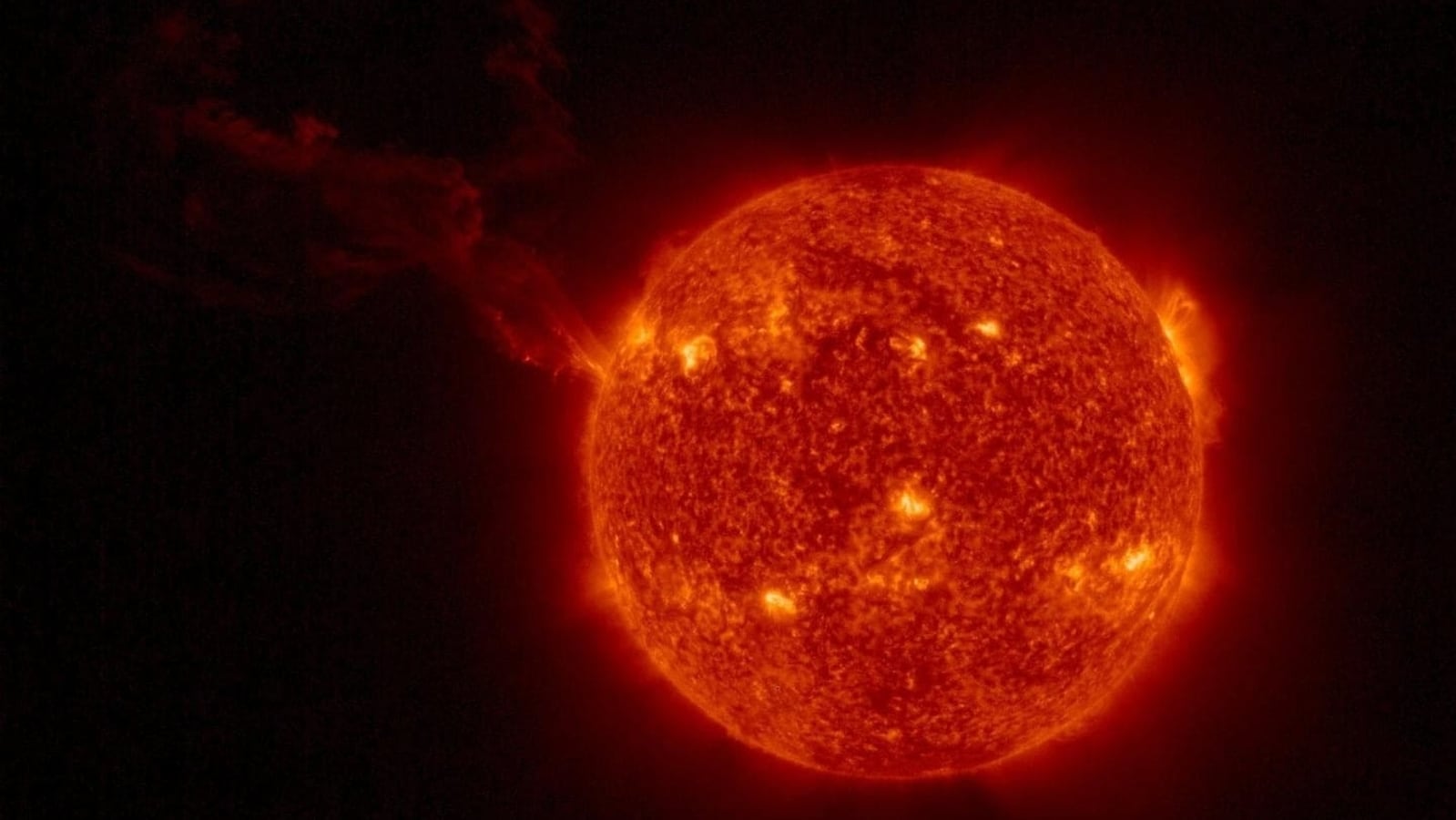Highest number of dangerous sunspots in 3 years facing Earth; Big solar storm coming?
Today, as many as 9 sunspots are facing Earth, the greatest number in the last 3 years. Is this a sign of a dangerous solar storm heading for our planet? Find out.






 View all Images
View all ImagesAstrophysicists have been warning us about the approaching peak of the ongoing Solar Cycle 25 for months. And today, for the first time, we have received proof that the peak is indeed coming soon. Today, as many as nine different sunspots are on the Earth-facing disk of the Sun. This is the greatest number of sunspots scientists have seen since the beginning of the current solar cycle in December 2019. The increase in the number of sunspots indicates that solar maximum, the peak of the solar cycle which has been predicted to arrive in the first half of 2023, is now upon us. And this is bad news for us. Nine sunspots also mean nine different regions on the Sun where the magnetic fields are unstable and can explode at any moment sending a huge solar storm to Earth. And if multiple sunspots explode together, the results could be devastating. Read on to know what the Sun is brewing today.
The development was reported by SpaceWeather.com which stated, “Today, there are nine distinct sunspot groups crossing the face of the sun--the greatest number so far during young Solar Cycle 25. This would seem to boost the odds of a solar flare”. A solar flare is the eruption of magnetic filament once a sunspot explodes. This also sends huge amounts of coronal mass ejection (CME) into space which eventually cause solar storms on Earth.
Solar storm trouble brews for Earth
With as many as nine sunspots, the risk is definitely high for a powerful G5-class solar storm striking the Earth. For the unaware, this is the highest class of solar storm which carries enough magnetic charge to destroy small satellites and damage sensitive instruments on larger ones. But not just stopping there, they also disrupt wireless communications such as GPS, radio waves, mobile networks and more. Even internet cables submerged in the ocean are not free from its effect. Furthermore, it can also damage electronic devices on Earth including critical instruments such as pacemakers. Even forest fires can be caused by them on rare occasions.
However, there is some silver lining and we need not panic right away. SpaceWeather mentions that all the nine sunspots show stable magnetic field lines. This means that the chance of an explosion is not as high. While this reduces the chance of an immediate solar storm, it should be remembered that the magnetic polarity on sunspots is very volatile and is susceptible to instant changes. It remains to be seen whether the sunspots maintain their stability till they move away from Earth's view.
Catch all the Latest Tech News, Mobile News, Laptop News, Gaming news, Wearables News , How To News, also keep up with us on Whatsapp channel,Twitter, Facebook, Google News, and Instagram. For our latest videos, subscribe to our YouTube channel.





























